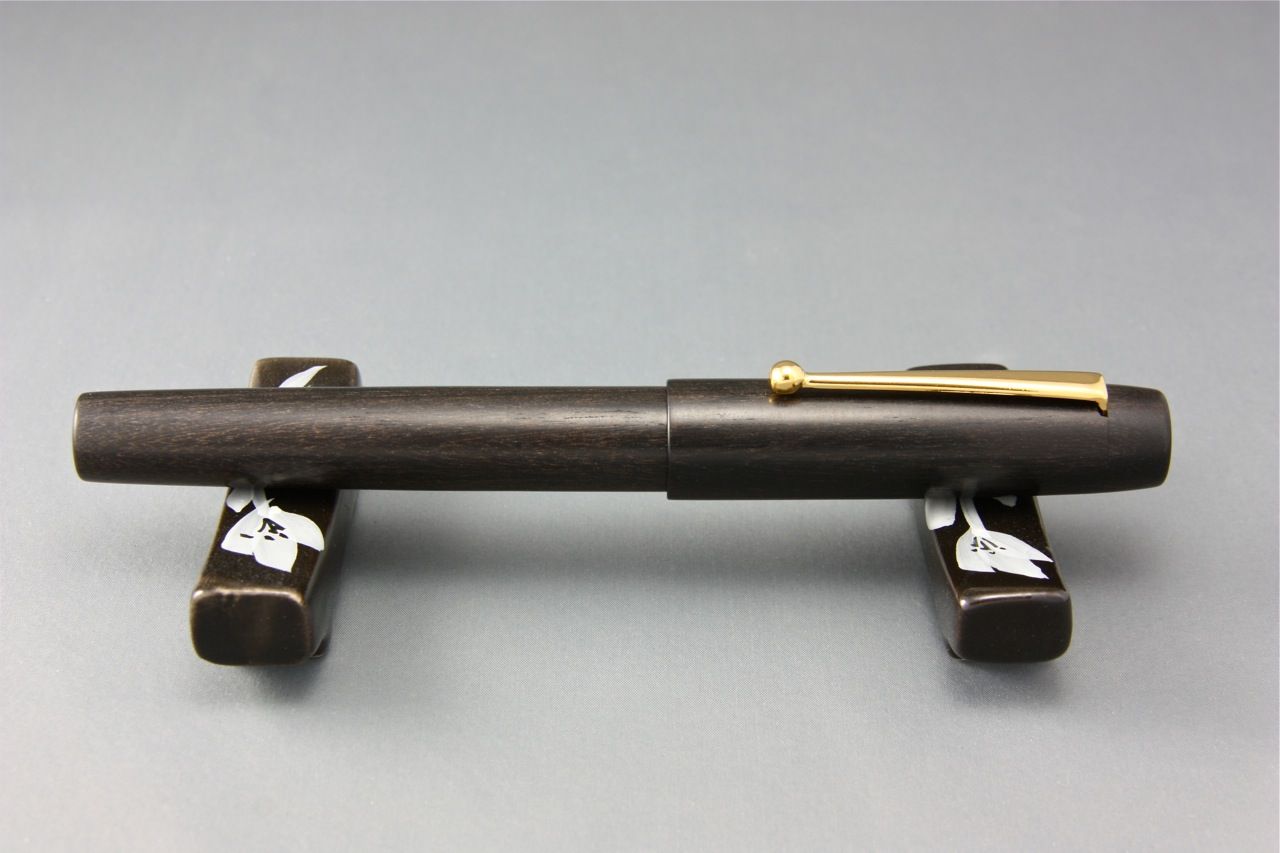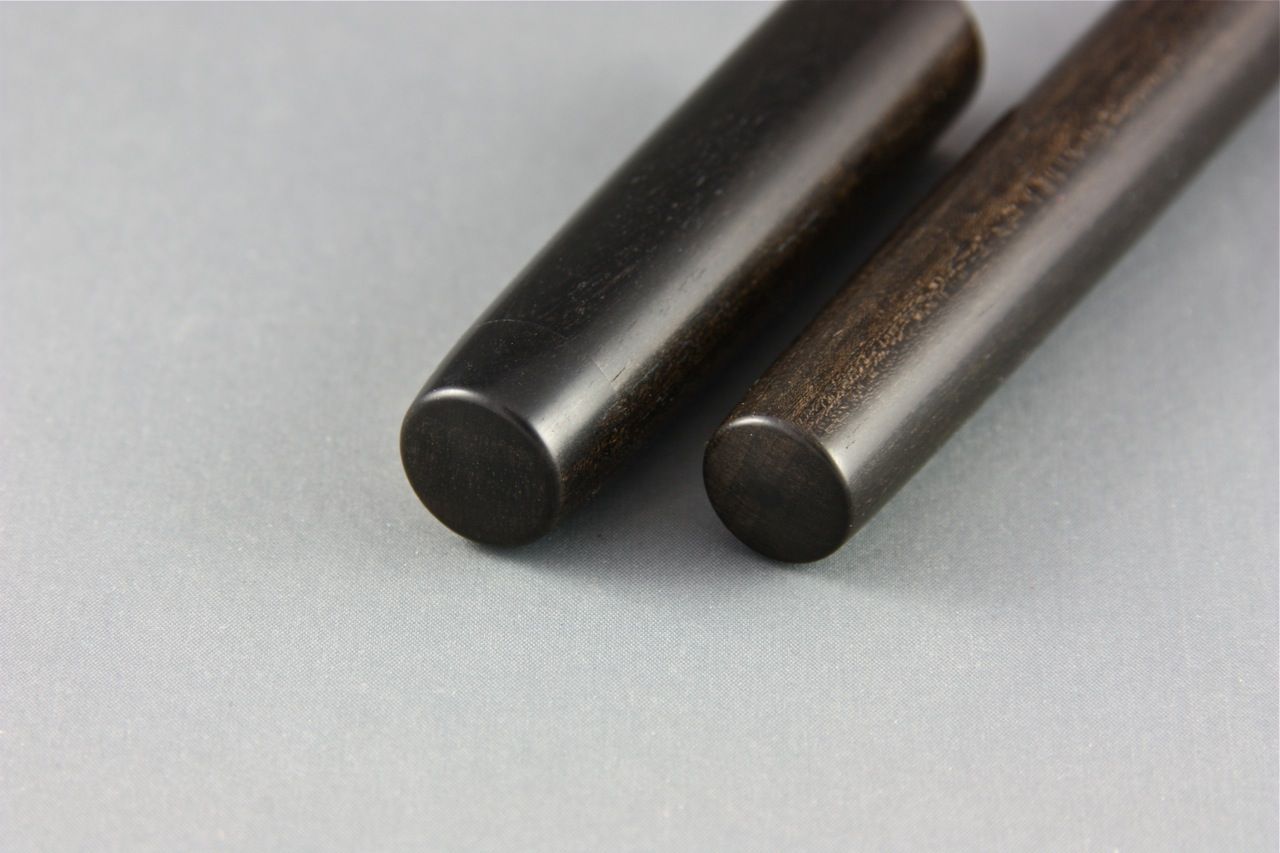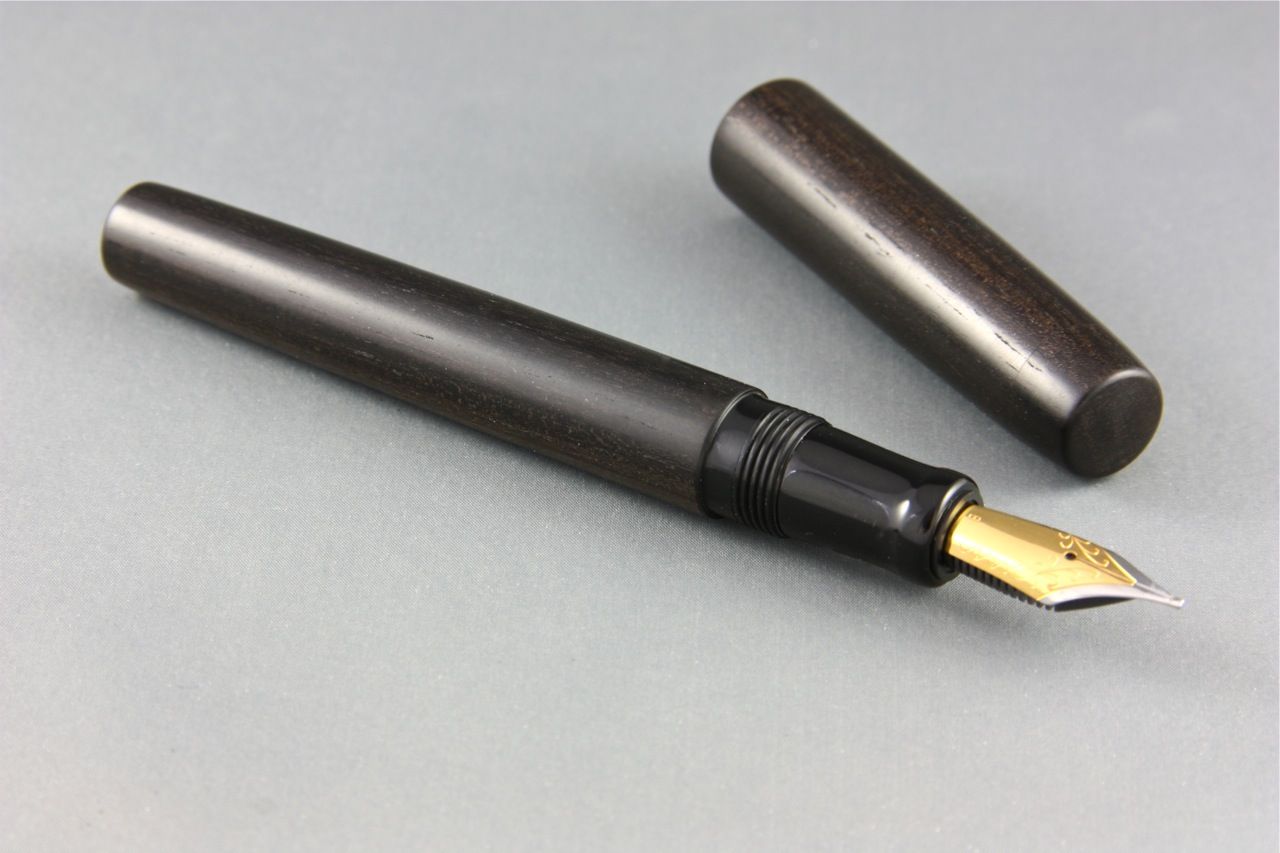Here it is - classic flat-end styled fountain pen of very nice african ebony, black acrylic nib section, with ball-end clip and JoWo steel nib (stubbed broad) . Grain of the wood is lined up finial to cap and cap to barrel.
For some time now, I have been planning to create a series of pens out of various exotic (and some not-so-exotic) woods. I mean, I have made many, many wood pens before, initially out of the pen kits, and later a long series of clipless pens all finished in a heavy high-gloss coat of CA, giving the wood a gem-like look. But having seen some of the wood pens coming out of Japan (Sailor, Pilot, Platinum), I rather liked the minimalist finish on them, and was inspired to start working on a series of my own.
Here was the big challenge - I wanted to do this without using any of the brass tubes, threaded inserts, and press-on finials that are characteristic of the kits pens. The problem here is that wood doesn't hold threads very well - you can thread it, but screw it together a couple of times, and the threads could start to crumble. So, need to make the threads using something else. And on my pens (that have clips), there are four sets of threads: nib unit to nib section, nib section to barrel, barrel to cap, and cap to finial (the tip of the cap that hold the clip on).
The first set of threads is pretty straightforward - make the nib section out of black acrylic, use the tap as usual to allow the nib unit to screw in. The second and third, less so. What I had to do was turn an acrylic insert and fit it into a recess in the front end of the barrel. This could then be drilled out and threaded inside to accept the nib section, as well as outside, to screw into the cap. The cap itself also needed an acrylic insert created to fit inside it, to allow for threading to accept the barrel. The finial was perhaps the trickiest, using the same sort of procedure to create an acrylic tenon on the finial, and an acrylic insert into the end of the cap, both of which could then be threaded, allowing the finial to screw into the cap as is usual for my pens. But, I still had to make sure the grain of the finial matched the grain of the cap when screwed tight. Lots and lots of fine adjustments, retesting, more adjustments etc...
The finish on this pen a couple of very light penetrating layer of thin cyanoacrylate, sealing the wood and allowing a nice subtle gloss to the wood, while not hiding the surface texture. The inside of the cap and barrel have also been sealed with oil lacquer to help protect the wood.
I decided to do something a bit different with the nib on this pen - so I ground a broad JoWo steel nib into a stub and smoothed it. I am quite pleased with the result - a nice, smooth stub, around 1mm, with very nice line variation. I was tempted to put a gold nib on it, but the only gold nib I have in stock is a fine.
The reality is that this pen was a bundle of work, so I don't think I will get to the next 'Classic Woods' pen very quickly, but I am extremely pleased with the result.
Thanks for looking!
Ken






This looks awesome! I was searching the net for another pen when I came across a photo of this beautiful wood pen!
ReplyDeleteWhat a beauty! Can I buy this? If yes, please email me at 'kingshin1@hanmail.net'
ReplyDeleteThanks very much!
ReplyDeleteI'm afraid that this pen was sold shortly after its creation. However, I would certainly be happy to make a similar one for you.
Ken
How much would it cost for a pen similar to this? It's very beautiful.
ReplyDelete